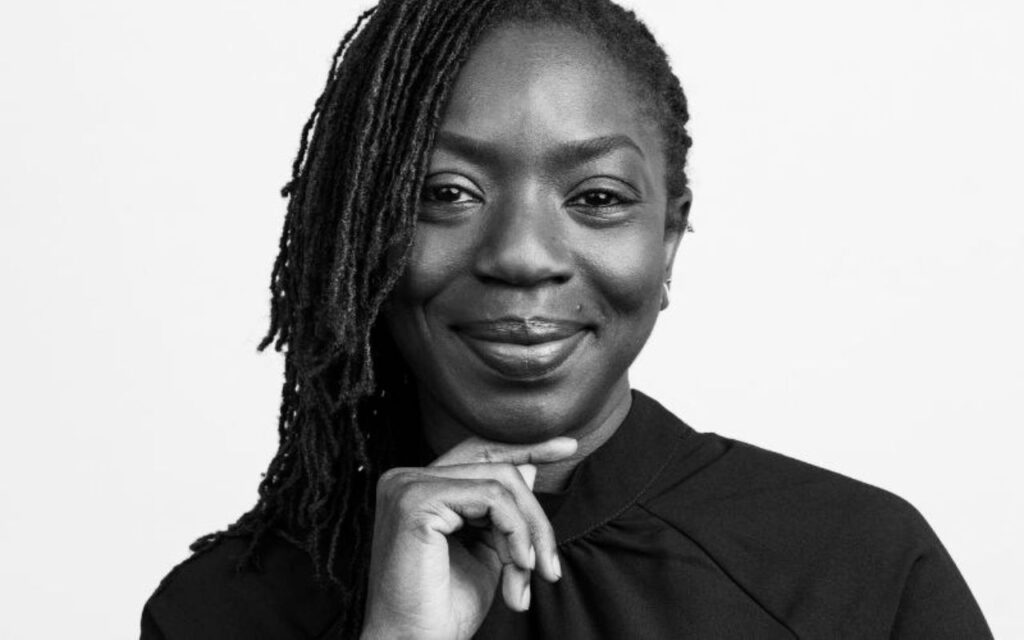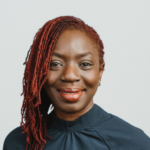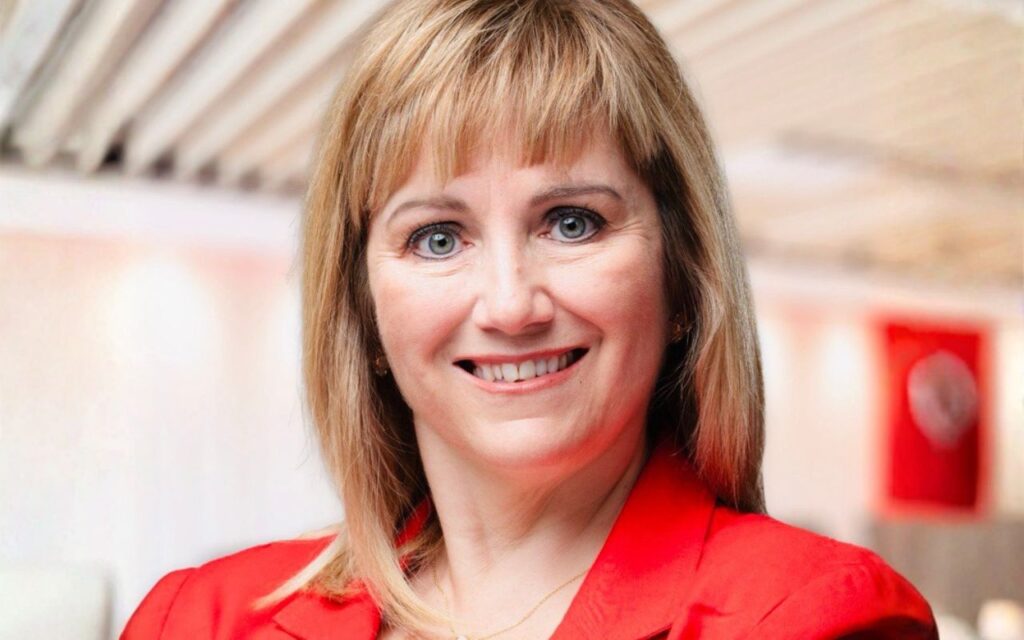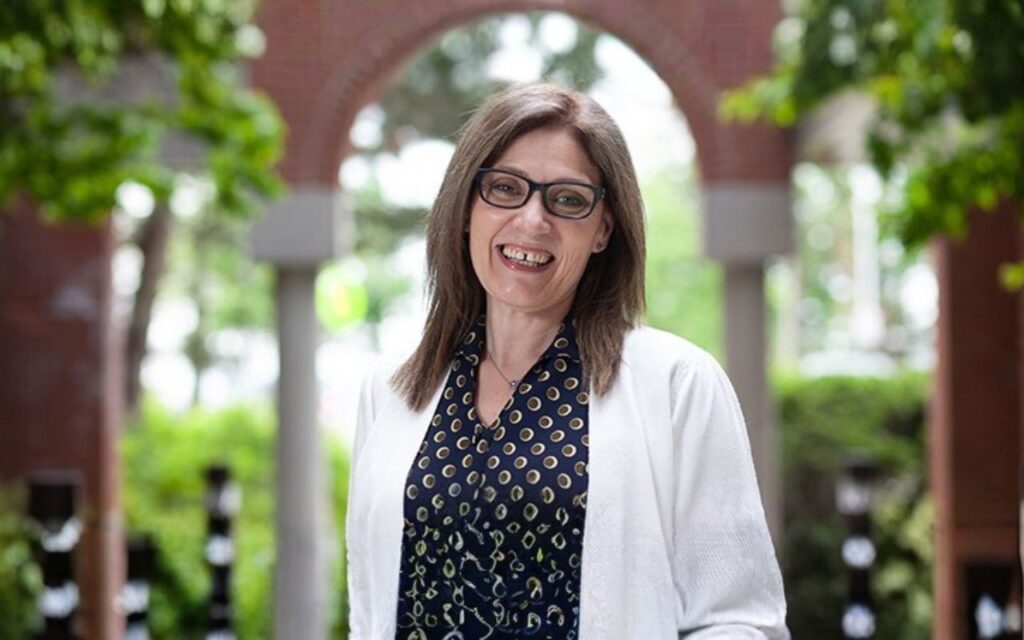
In Jenny Mitchell’s new book Embracing Ambition: Empowering Women to Step Out, Be Seen, & Lead, she invites 12 women leaders from across North America to recount the ups and downs of their leadership stories as a guide for the next generation.
Featured in the collection is an essay by Onome Ako, CEO of Action Against Hunger Canada.
Entitled Boxes, Ako recounts the very real challenges she faced throughout her career, combatting issues of race and gender on her journey through the corporate world.
Today we are sharing Ako’s honest essay.
Boxes by Onome Ako
In a highbrow hotel in a chic European city, I sat alongside my fellow CEOs in a meeting with our board members.
Most were male and white, with a scattering of women around the table.
I am near the head of the table, and it is time for my introduction. Everyone else at the table has been here before, but I am new to my position. All the important moments of my life led up to this. All eyes are on me.
“We are happy to introduce our fabulous new BIPOC CEO…”
Every other word is drowned out, and the walls seem to close in on me.
Fabulous. BIPOC.
These aren’t my credentials. My skin colour doesn’t speak to my qualifications or the years of hard work I’d put in to earn a place at this table.
I feel myself shrink back into the box I’d been crammed into over and over and over again throughout my life and my career in Canada. That feeling of smallness, of feeling like you’ve crammed yourself into a tiny box. I had tricked myself into believing it was behind me, that I had outgrown that box since I was now the CEO of an international development organization.
I tune back into my formal introduction to the group. Maybe now will be the moment when she speaks to my accomplishments and to the qualifications that relate to things other than my skin colour and my gender. She begins the next sentence with, “As an aid recipient, Onome…”
The lid to the box slams shut. An assumption—a mistaken one—that as a Nigerian immigrant, I must have been an aid recipient. Just another way of diminishing me, of keeping me one rung below everyone else seated at the table. I wonder if my white male peers would ever be introduced as being products of the welfare state.
It still surprised me that after all these years developing a career in Canada, my colour and my gender always came first. When I started working in Nigeria, my colour never stood out and was never mentioned. Being black and being a woman—those were the pieces of me that others saw first and I couldn’t hide either of them. They were visible before I said anything. It was like people had defined who I was before I started speaking, and I would never break out of that box of assumptions.
I moved to Canada in 2007. I was inspired by my parents who had dedicated themselves to providing clean drinking water to the neighbourhood where I grew up. I was determined to find my feet in the international development sector. I wanted to help people. I wanted to help not because they were “helpless,” but because I believed that together we could make things better for our community. Together. To this day, I still see the word “help” as loaded. Who decides when we are “helping?” Is it the recipient? Or the helper? I think help is a two-way experience felt by both parties.
When I was in my thirties, I got a job in an organization that I cared deeply about. For me, it was my big break. And it became more than a job. It was my community, my family. That organization became my identity, and I was proud to announce I worked there.
My role within the organization gradually evolved to something off the beaten track: private sector engagement. It was a new territory, and I saw my opportunity to shine. And shine I did. I quickly became recognized within the global organization for bringing a unique set of skills to the work. Unfortunately, I was so good at my work that I became pigeonholed into this area of expertise which limited my opportunities for growth within the organization. When I tried to pursue other avenues, doors slammed in my face.
The breakthrough to my next job happened after a presentation I gave at a global conference. The VP of corporate social responsibility at a private sector organization took me aside and invited me to join their team through an opportunity: I would be seconded from my current job to work with them in the private sector. They saw my ability to switch between the not-for-profit and private sector worlds as an asset. They saw the value that I could bring to community engagement initiatives. Finally! The world was opening up in front of me and I was ready.
The months of dialogue, planning, and filing forms with HR were agonizing, but I kept my spirits high by envisioning how this role could break down barriers that existed between the for-profit and not-for-profit world. I thought often about the people who would benefit from this type of collaboration. Finally, the paperwork was finished, the stars were aligned, and my bags were packed.
And then I got the call. The whole thing was a no-go.
They gave an excuse about liability and risk relating to secondments. All I heard was another door slamming shut. The many visions that I had—packing my luggage, boarding my flight to different destinations, meeting my colleagues and community members, contributing to the organizational knowledge, the potential of huge impact—it all came crashing down, or in this case, streaming down through the tears I could not hold back. My nose dripped. I felt humiliated showing this much disappointment. I rushed to the washroom—the last cubicle, to be exact—to let out the tears.
That last cubicle was not a stranger to me. She and I had a history. The washroom stall had held space for me when I did my celebration dance upon receipt of my offer letter to be permanent staff. She had given me the courage to tell a colleague to stop making fun of my accent and stop telling me how “well” I spoke English. And she had been outraged on my behalf when I had been passed over for opportunities that I was more than qualified for. I was able to express my emotions with her after that time when a donor had assumed I was a “sponsored child.”
There were high points, too: successfully advocating for equal pay for equal work alongside a male colleague with the same job.
Triumph and tears. That stall was my safe space where I didn’t have to pretend anything. I didn’t have to be anyone but all of myself. Thank goodness she was an accessible washroom; I always had enough space for my victory dances as well as my angry pacing!
My relationship with my bathroom stall continued for another year. I found my next role at another small not-for-profit. It was a leap of faith to step out and go for a new job.
I did not miss my bathroom cubicle at my new job. Maybe I didn’t need it anymore, or maybe my personal challenges outweighed my work challenges. Work became an escape for me. It was such an escape that just a couple of hours before my daughter was born, I was in the waiting room at the hospital sending work emails! It goes without saying that I got a few phone calls from my boss suggesting I sign off and go on parental leave.
I would say that the majority of my challenges during this job were external. The same kind of issues came up. And they tended to focus on how people perceived me. For example, at events, guests would make a beeline toward me and ask: Is there a cash bar? Where can I find the washrooms? I would look back at them with a confused expression on my face. And then it would hit me: Oh! They think I am a server.
What would you do in this situation? You meet someone new at a party and you tell them you work for a not-for-profit. They ask, “Are you in customer service? Or admin?” Do you do what I did and say, “No, I lead partnerships,” consciously downplaying what I actually do? How else do you respond to that? What would you do?
Sometimes my blood boils. Being in customer service is great. But that’s not what I do. That’s not what I have trained and sacrificed for all these years. Is this the box I will always be put in? Will it ever change? No one assumes that I am a leader.
I want to share a few more examples to demonstrate to you what women of colour are up against on a daily basis.
I was volunteering with colleagues at a refugee center. One of the other volunteers came up to me and asked, “Do you like it here?” There was this awkward moment of silence. My eyes narrowed as I tried to understand her question, and it hit me. She thought I was a refugee. “I am Canadian,” I tell her. She apologized profusely.
I also want to call out some unsavoury stereotypes of my people that are deeply ingrained in Canadian culture. I feel the pressure to prove those stigmas wrong. Everybody has heard of the Nigerian email and phone scams. The unspoken question when I am working with my board of directors is: “Can our Nigerian CEO be trusted with the organization’s money?” Financial transparency is and will always be a big thing for me. No room for questions. No room for doubts or maybes. Do I overcompensate? Probably, but I still do it.
When I came back to the workplace after the birth of my daughter, my raison d’être to build my career had a different meaning. I balanced being a new mom with my demanding job. I was suddenly aware of the legacy I was ready to impart to my daughter and girls just like her. I felt I had a role to play in breaking down the stereotypes so that the world could be a more inclusive place for her. I felt driven. I had a new “why” for my work.
I was determined to be fully present for her. Family played a critical role. My parents left the lives they had built together for over forty-five years in my home country of Nigeria to start afresh in Canada to support me. At the time, they were 70 and 71. Having them at home meant that I was able to raise my hand to take on assignments that stretched me. My success presented several growth opportunities for me, and I started to get noticed as a leader.
When the opportunity came up to put my hat in the ring for the executive director job, I went for it. As an internal candidate, I knew that I would need to demonstrate to the selection committee why I was the best candidate—not just the best internal candidate—for the job.
I remember a few key moments during the selection process. I prepared like hell for the interview, and I did not take it for granted that the job was mine. In hindsight, I also realize that having gone through the full interview process gained me the respect of my colleagues. This is priceless, and I would not have traded it for the world. Funnily enough, the interview process demonstrated to me that I was indeed ready to lead an organization as an executive director.
Landing the job felt good. It was made public at an international conference in 2019. I remember walking through the large halls of the Vancouver Convention Centre and being congratulated by former colleagues and peers. And then, in the midst of over six thousand people attending the conference, the head of my previous organization headed toward me and congratulated me. It felt surreal.
Back in Toronto, the real work began. As one of a handful of African women leading organizations in the international development sector, there was a lot at stake. There was the pressure of my actual work. There was my commitment to deliver on my mandate as the executive director while balancing internal and external expectations.
I had already cleaned up the balance sheet as executive director for the organization. I had navigated an unexpected global pandemic. I had reinvigorated my colleagues toward a common vision.
I wasn’t looking for a change, but I took the recruiter’s phone call when they reached out. At the same time, I was invited to step up as chair of a large membership-based not-for-profit organization. If I accepted both, my plate would be full!
The night before the application deadline for the role of CEO, I sat at my kitchen table with a council of trusted friends and family. I worried that both roles (CEO and chair of the board) would take too much from me and keep me away from my daughter too much. I worried about perception and wondered if I had the courage and stamina to continue fighting for my place at the table.
The kitchen table council meeting took place in the wake of the George Floyd murder. My loved ones reminded me that this decision didn’t just affect my future. It could affect the entire community, and I had a responsibility to my community to go “all in” on this opportunity. I could demonstrate that positions of influence could be held by people of colour. If one of their own could make it into a leadership position, then maybe it was possible for others to get there too.
Even today, I wear this mantle of responsibility with mixed feelings. On one hand, I am proud to stand for hope and possibility for others. On the other hand, occupying this space is very difficult. And it is exhausting. When you exist as a symbol, it can feel like that is all people see. I, the real Onome, the human inside this symbol, often feel invisible. For context, the obstacles I have in front of me as a female black woman are different from my white peers. I encounter racism, microaggressions, and bullying. I hold that mantle or responsibility with as much humility as I can, knowing that how I react to these situations will be carefully scrutinized by others.
Everyone’s watching. The burden is on me to overcome, not on others to adapt or shift their behaviours.
I became CEO of Action Against Hunger in 2021.
I’m often asked what it feels like to have arrived. I suppose people see a black immigrant in a CEO position and believe that I have somehow “made it” or reached an endpoint. And I will admit that for a second, I thought so too.
I think back to that moment, in a highbrow hotel, in a chic European town where I was introduced as a “fabulous BIPOC CEO.” Having a seat at the table as CEO did not protect me from having the wind knocked right out of me. This was not the arrival I was expecting.
What I learned in the aftermath of that experience and what feels like a million other moments big and small, is this: there is no neat and tidy ending. We don’t just wrap our experiences up in a bow.
Because the top of one mountain is the bottom of the next. And the next. And the next. A journey without an end, a story without a pretty “happily ever after.”
While I speak from the experiences of my own journey, my journey is also a collective journey. The path I walk as a female black immigrant is different from the path you walk, but the point is that we’re both walking. With determination and grit. We each come with our own intersectionalities and unique perspectives.
Some days I want to give up the journey altogether or take the easy route. A day where I’m not fighting for gender parity, dismantling harmful stereotypes, or navigating racial prejudice. But at the end of the day, I come home and I see my daughter’s face.
And I know that every step I take means she gets to start that much further ahead.
So I keep walking.









